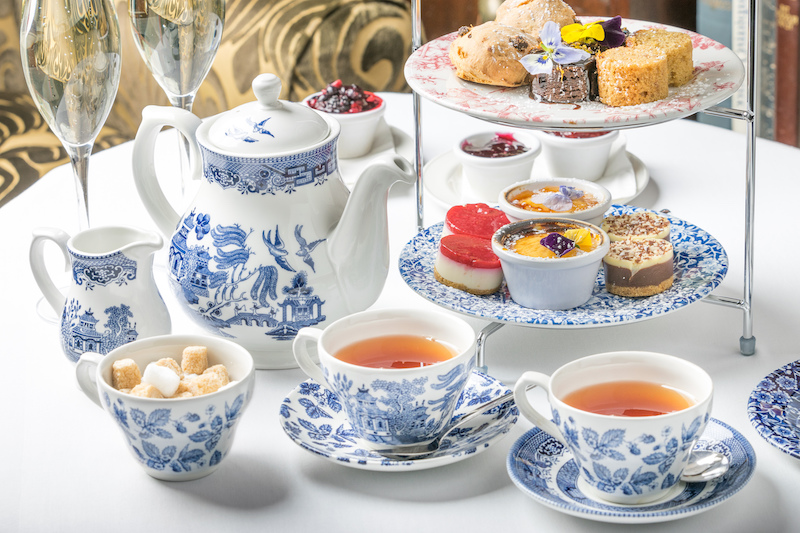The History of Afternoon Tea
It’s officially Afternoon Tea Week on 9-15 August.
Not only do we get to use this as an excuse to celebrate with our loved ones, over a delicious cup of Afternoon Tea with sweet and savoury treats. It’s also the perfect time to explore the history of afternoon tea; a quintessential British tradition.

Afternoon Tea History – How did it Start?
Afternoon tea was first introduced in England around the mid 1800s by Anna Russell, the 7th Duchess of Bedford.
With the evening meal served at eight o’clock in the evening, the Duchess would become hungry during the afternoon. Thus, she began requesting a tray of tea, bread and butter and cake to be delivered to her room. This quickly became a habit and she began inviting friends to join her.
The trend spread and Afternoon Tea became a fashionable social event. During the 1880s, upper-class and society women would change into long gowns, gloves and hats for their afternoon tea, which was served in the drawing room.
Teas from India or Ceylon were the original afternoon teas of choice. Served from luxurious silver tea pots and the finest bone china tea cups.
We recommend the following Teas to enjoy with your Afternoon Tea:
English Afternoon Tea
Our very own Afternoon Tea blend. A fine combination of China and Darjeeling teas with a hint of Lapsang Souchong giving slight touch of smokiness. Smooth and easy. The ideal companion of cucumber sandwiches, strawberry jam scones and cakes – which is why we blended it especially for this purpose.
Royal Earl Grey
A particularly refined Earl Grey enhanced by royal blue mallow flowers resulting in an exceptional tea. Fragrant and light, the underlying blend is Ceylon and China. Enjoy with or without milk. Earl Grey has grown in popularity since first named for the 2nd Earl Grey in the early 19th century and is now famous worldwide as one of Britain’s most iconic blends. Try with custardy or chocolate cakes.
Lapsang Souchong Superior
A higher grade Lapsang made from best quality Souchong leaves. The large lower leaves of the tea plant (‘Souchong’ leaves) are smoked over pine wood rich in resin. This yields the classic smokiness with a spicy touch. Goes well with smoked salmon sandwiches and sharp lemony flavours.
It is claimed that Lapsang Souchong was the first black tea produced in China during the early Qing era when wars delayed the drying of the tea harvest and farmers then opted to speed up the drying process by placing the leaves over pinewood fires.
Royal Afternoon
The leaves of this black “gunpowder” tea are tightly rolled up resembling delicate black pearls (or gunpowder pellets). As they infuse, the pearls unfurl and release their exquisite flavour. Aromatic and mild taste yet with good body, well suited to accompany any Afternoon Tea. Fit for a Queen or a King and for your traditional tea party.
Darjeeling First Flush Soom
A highly aromatic first flush with an excellent light green leaf of pure Chinese origin.
Wonderfully aromatic first flush with an excellent light green leaf of pure Chinese origin. High grown from the renowned Soom Tea Gardens in the foothills of the Himalayas.
Sweet and soft in flavour, a tea whose quality you can profoundly enjoy.
Founded in the 1860s, the name “Soom” derives from the local Lepcha language and means triangular due to the shape of the garden, bordered by the Little Rangeet river in the Higher Himalayas.
Beyond The Tea
Traditionally a selection of dainty sandwiches, often with cucumber, and delicious scones with clotted cream and preserves are served with afternoon tea. Don’t forget the cakes, too.
To learn more about Anna Russell, the 7th Duchess of Bedford and founder of this famous tradition, read our feature on ‘Tea & Women Through History’.
This great tradition which stemmed from someone being a bit peckish, is something that most people can now say they’ve taken part in.
